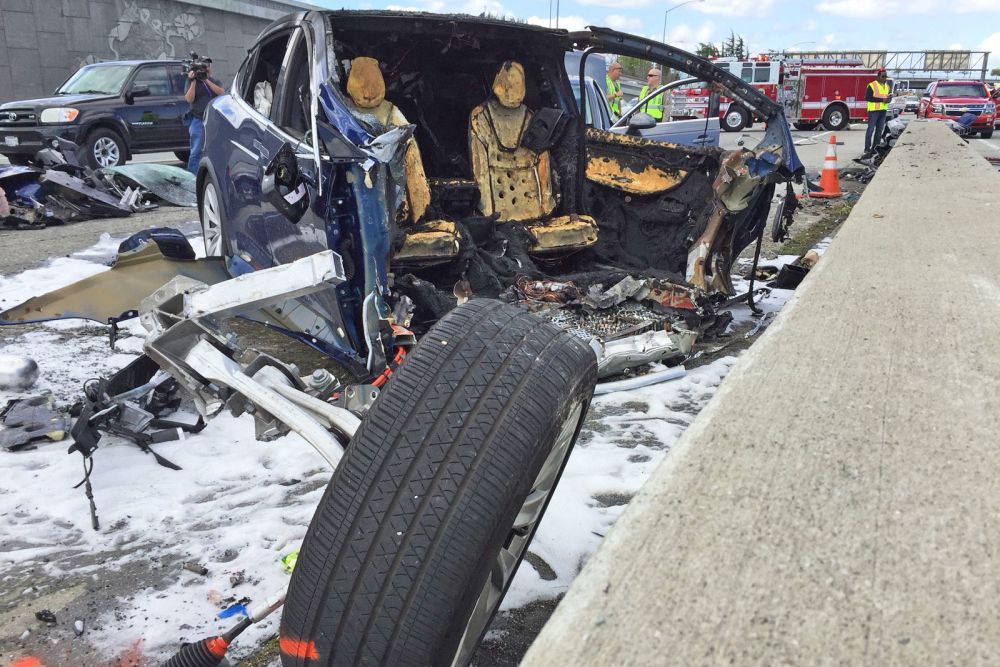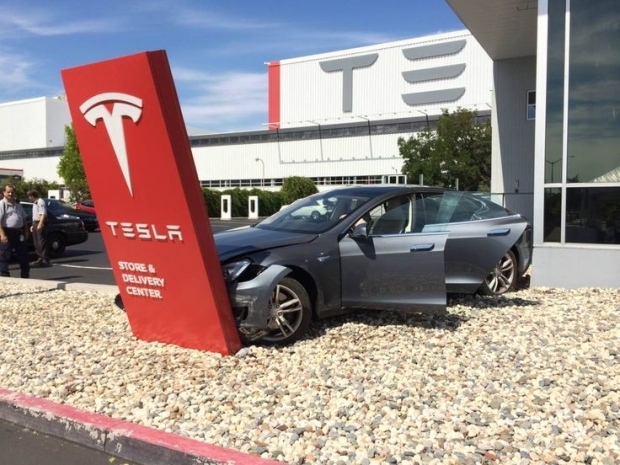Of course, this is a huge problem for Tesla and everyone else involved in the self-driving trials. This accident happened just days after the Uber Fatal accident that stirred the pot heavily and showcased that we might be much further behind on Level 4 and 5 self-driving that we have been lead to believe.
Nvidia provides a specialized version of Drive PX2 hardware that comes with a Denver ARM-based SoC and a Parker class GPU with an additional MXM based discrete GPU to help the autopilot functionality. Tesla S, X and 3 solutions should sit between Drive PX2 auto cruise and Drive PX2 auto-chauffeur version of the hardware.
Tesla has its own in-house software team so Nvidia does not have to worry that much about being thrown under the bus for this accident, but the question remains why the autocruise control didn’t detect this fatal median barrier.
Tesla officially
In the moments before the collision, which occurred at 9:27 a.m. on Friday, March 23rd, Autopilot was engaged with the adaptive cruise control follow-distance set to minimum.
The driver had received several visual and one audible hands-on warning earlier in the drive and the driver’s hands were not detected on the wheel for six seconds prior to the collision.
The driver had about five seconds and 150 meters of unobstructed view of the concrete divider with the crushed crash attenuator, but the vehicle logs show that no action was taken.
Tesla also blames the people maintaining the road that the median crash attenuator, a highway safety barrier which is designed to reduce the impact into a concrete lane divider, had been crushed in a prior accident without being replaced. This likely led to so much damage to one of the safest SUVs on the market.
Elon's crew also offered some statistics that Autopilot is safer and that the feature reduces crash rates by as much as 40 percent and you are 3.7 times less likely to be involved in a fatal accident.
Humans have attention deficit
The latest fatal Tesla X accident shows the issue of the least safe component of every car, the human and her or his inability to pay attention to the road. People rely on the autopilot so much that they don’t watch the road at all, which has proved to be a very dangerous thing.
Tesla can detect most problems, but not all. Our sincere condolences go to the family of the autopilot casualty but we have to admit that features such as autopilot does make cars safer - at least until they don’t.
It is still early days in the self-driving revolution but clear steps are being made forward. Our advice is, for the time being, to let the autopilot drive but be on alert at least for the next few years and for more advanced autopilot features. You don’t want to trust the car without radar as cameras seem to fail at some point, rarely, but it has happened at least a few times now.
Tesla is facing a huge recall of 120.000 Tesla S cars due to corroded bolts that can cause steering problems. This could not have come at a worse time as Tesla is struggling to deliver "affordable" Model 3 to 400,000 that decided to gamble and pre-order a non-existing car. Elon is a magician and will likely pull a rabbit out of its hat, but all of the problems detailed above show manufacturing a huge quantity of cars is not easy.




